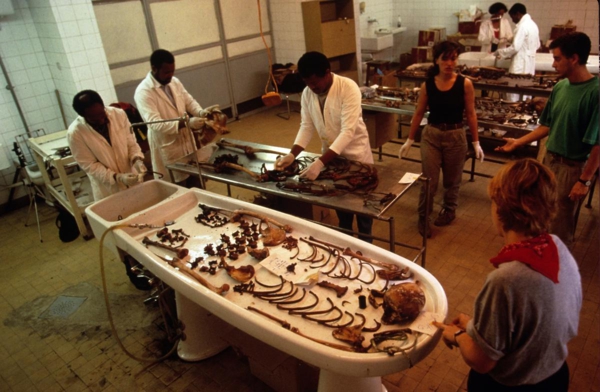
What is forensic science?
Forensic science doesn’t just cover the things you see on CSI, it’s incredibly broad in scope and includes a variety of scientific and technological techniques, designed to establish facts for use in both criminal and civil law cases. The word ‘forensic’ actually stems from Roman Latin and refers to when cases were put before the forum in ancient Rome.
How did it develop?
Contemporary forensic science has greatly improved our ability to solve crimes. However, although forensic science has made huge leaps over the past century, its principles can be documented as far back as the stone-age, where fingerprints were shown in rock carvings.
Fingerprinting
In 1877 Thomas Taylor was the first to suggest human fingerprints could be used for identification purposes, building on his theories Henry Faulds used the technique 3 years later to eliminate an innocent suspect from an investigation. The fingerprinting technique was first used by Scotland Yard in 1902 and continues to be used to this day by law enforcement worldwide.
Fingerprint identification is actually known as dactyloscopy and works by comparing two samples of the impressions left behind by friction skin ridges. Due to the flexibility of friction ridge skin it is believed no two prints are ever entirely alike, and so it can be used to place suspects at the scene of a crime or to demonstrate their innocence.
DNA testing
DNA profiling works by looking at the genetic sequence of a sample of human DNA to establish the identity of an individual. Although all human DNA is 99.9% similar, each person’s DNA is completely unique (except of course with identical twins). This technique is particularly useful for identifying the body of the deceased, or for examining genetic material left behind at the scene of a crime.
The first successful use of DNA testing was in 1986 when the technique was used to identify Colin Pitchfork as the murderer of two young girls. Since then scientific techniques have developed massively and today DNA profiling is regularly used as courtroom evidence and has been instrumental in bringing countless murderers and rapists to justice.
Contemporary forensic science
Today the scope of forensic science is mind-blowing. Ballistics can be used to link a bullet with the gun used to fire it. Forensic entomology examines insects on a human body to determine the time and place of death. Even the footprints of a suspect can be examined by forensic podiatrists to establish their identity at the scene of a crime.
New breakthroughs are being made in this cutting edge field every year. Recently Lawrence Farwell developed brain fingerprinting, a revolutionary technique where brain wave responses to viewing pictures are used to aid the identification of criminals.
Developments in computing have been instrumental in the success of contemporary forensic science. Innovations such as the Internet have enabled greater collaboration between law enforcement agencies across the globe. By sharing resources and having access to a huge pool of collaborated forensic data, it is easier than ever to identify criminals and facilitate justice.
Written by Matt Higgins, a researcher studying Forensics.










Comments